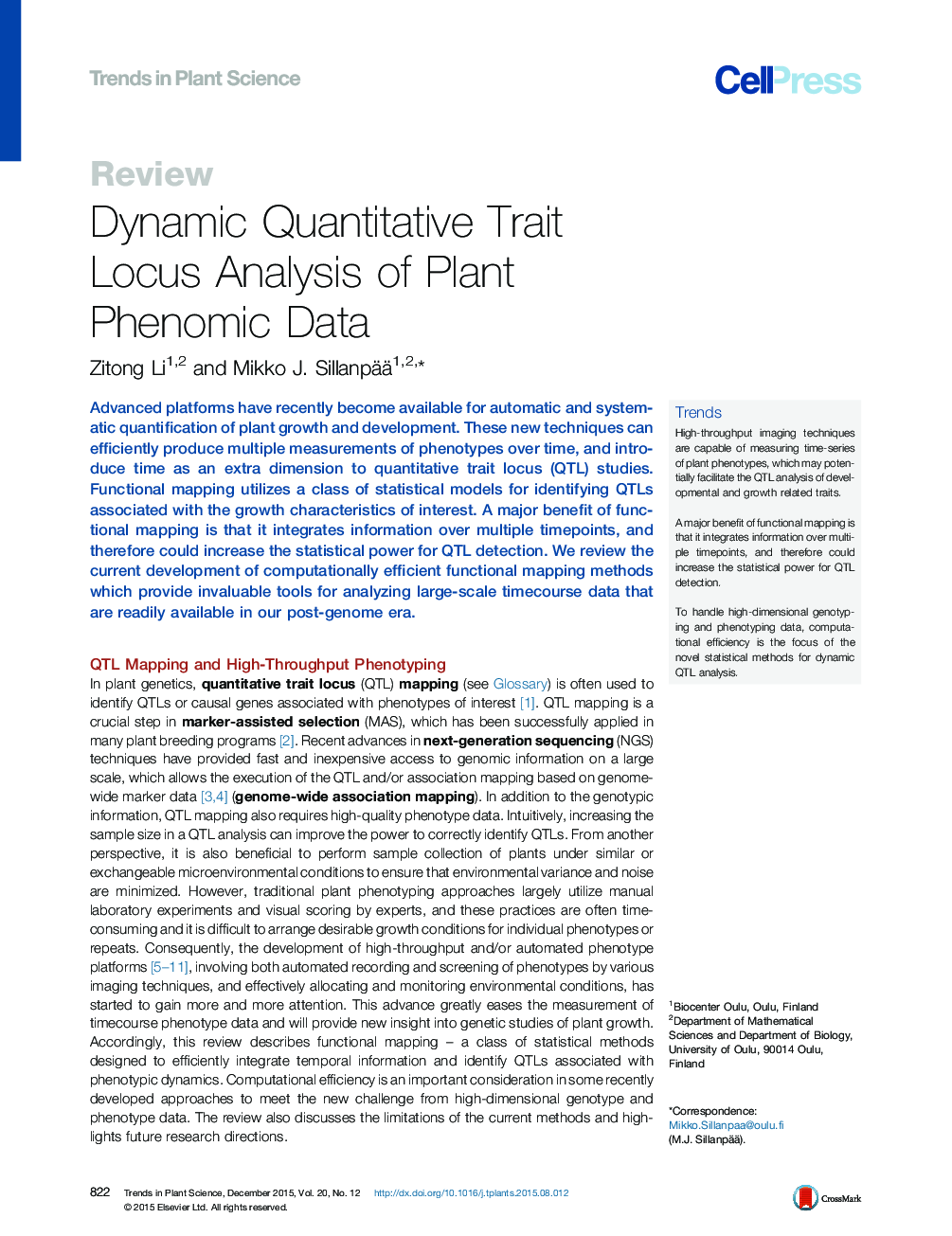| Article ID | Journal | Published Year | Pages | File Type |
|---|---|---|---|---|
| 2825774 | Trends in Plant Science | 2015 | 12 Pages |
Advanced platforms have recently become available for automatic and systematic quantification of plant growth and development. These new techniques can efficiently produce multiple measurements of phenotypes over time, and introduce time as an extra dimension to quantitative trait locus (QTL) studies. Functional mapping utilizes a class of statistical models for identifying QTLs associated with the growth characteristics of interest. A major benefit of functional mapping is that it integrates information over multiple timepoints, and therefore could increase the statistical power for QTL detection. We review the current development of computationally efficient functional mapping methods which provide invaluable tools for analyzing large-scale timecourse data that are readily available in our post-genome era.
TrendsHigh-throughput imaging techniques are capable of measuring time-series of plant phenotypes, which may potentially facilitate the QTL analysis of developmental and growth related traits.A major benefit of functional mapping is that it integrates information over multiple timepoints, and therefore could increase the statistical power for QTL detection.To handle high-dimensional genotyping and phenotyping data, computational efficiency is the focus of the novel statistical methods for dynamic QTL analysis.
